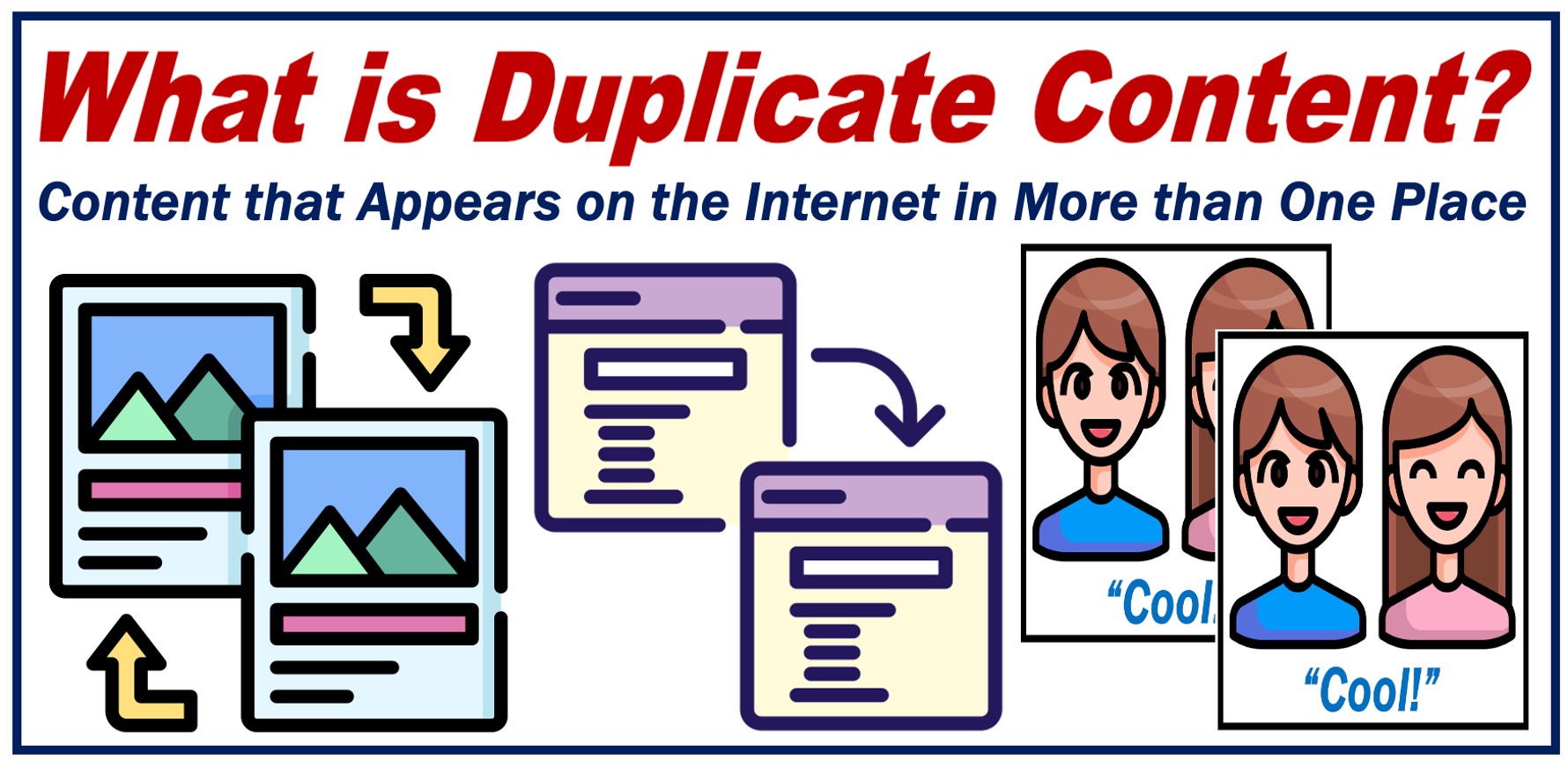Duplicate content refers to substantial blocks of text that are identical or nearly identical, either within the same website or across multiple websites. This can be text, images, videos, audio, code, or metadata. It is a common theme in SEO (Search Engine Optimization) conversations because this can affect a website’s search engine rankings.
“Duplicate content is a term used in the field of search engine optimization to describe content that appears on more than one web page. The duplicate content can be substantial parts of the content within or across domains and can be either exactly duplicate or closely similar.”
Types of duplicate content
The following are some types of duplicate content:
-
Internal
Occurs when the same or very similar content appears multiple times within the same website.
-
External
When two or more different websites have identical or nearly identical content.

Causes of duplicate content
There are various reasons why duplicate content may happen, such as:
-
URL Variations
The same page can have multiple versions created by URL parameters.
-
WWW vs Non-WWW pages
If a website is accessible and accessible on both its “www” and “non-www” versions, duplicate content problems may occur.
-
Copied content
When content is copied from one webpage and pasted verbatim onto another.
-
Syndicated content
Legitimate sharing of content across different sites may be misinterpreted as duplicate content by search engines.
Implications for SEO
-
Search engine penalties
Duplicate content may not always result in direct penalties, but it can lead to ranking issues. Search engines might struggle to decide which version to index and rank.
-
Diluted link equity
Multiple versions of the same content can have links pointing to them, which weakens the content’s potential ranking power.
Managing duplicate content
Here are some tips that may help you:
-
Canonical Tags
Using “rel=canonical tags” can help to search engines identify which version of a page is the preferred version.
-
301 Redirects
Use 301 redirects to direct traffic from duplicate pages to the original page, consolidating link equity and ensuring users reach the intended content.
-
Keep URL formats similar
To prevent accidentally creating duplicate content, make sure to use the same format for all your website’s URLs
-
Create unique content
If you focus on creating unique, high-quality content, you reduce the risk of duplication.
Best practices
-
Regular audits
Consistently audit your content to make sure there aren’t any content duplication issues.
-
Content syndication
When syndicating content, use methods that make clear to search engines where the original content is.
-
Understanding search engine guidelines
Familiarizing yourself with how different search engines handle duplicated content is very important
Written by Nicolas Perez Diaz
